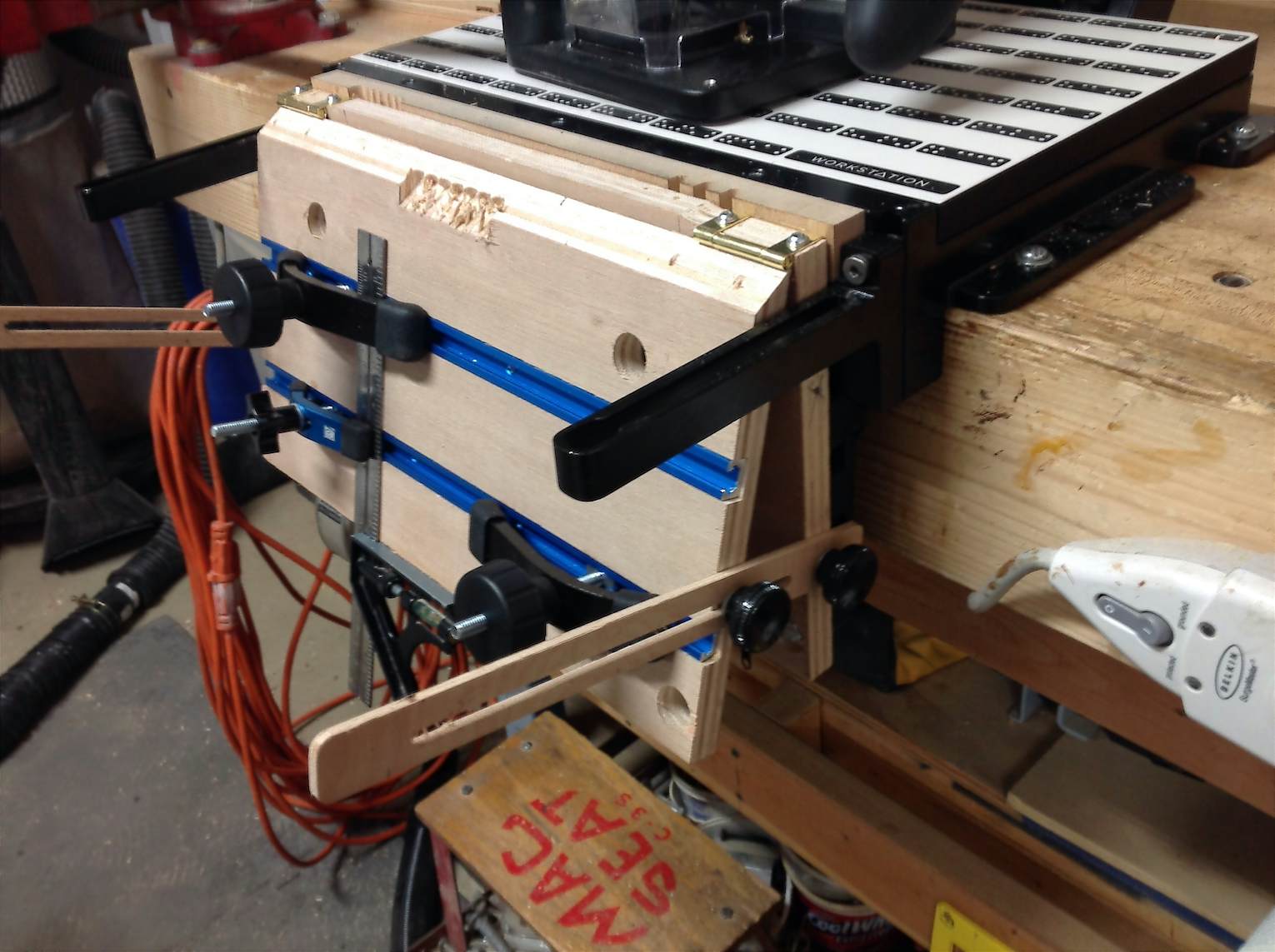3D Workstation


Workstation attachment for angled or compound angled box-joints. Bolts to the face of the workstation vertical front with 8 x 1.25mm bolts. T-track in hinged portion holds workpieces at the correct angles to produce splayed sides to boxes and trays.
94
Joinery
Files Included (1)
image.jpg
930 kB
Materials
24" x 48" plywood 3/4"
Toy box hinges
(4) 1/4 x 20 threaded inserts
T track
(2-3) T track holddowns
(4) M8 x 1.25 bolts 25-30mm or 1".
Tools
Shaper Origin
1/4" up spiral bit
No files attached. This is the jig I built in order to make box joints with splayed out corners or to make box joints at nearly any angle where the clamps don't get in the way of SO. This allows box joint corners on 5, 6, or more sided boxes without gaps. It also allows engraving onto items with angled sides after the build. The angles for the splayed corners can be found on the web at http://jansson.us/jcompound.html. But be sure to use the angles or calculations for butt joints and not miter joints.
Instructions
As the sides of the box splay outward the angles move away from 90/0. It's like cutting compound angles on cove molding. Use the chart above to cut angles on ends of all boards. When you set a grid using the angled edge for X axis you need to anchor the box joint to a negative y axis grid number. A 1/4" should be enough but carefully use guide cut to ensure all metal parts are clear of the cutter route. The thicker the wood or steeper the angle the further back you need the anchor point. You need to mirror the box joint to cut half the pieces. The process for mirroring the box joints involves copying the left hand box joint setup which is anchored to the right center and anchoring the copy which is anchored to the left center to the other side right next to your original. Cut half your ends on the left ( A's and B's) Then cut the other ends on the right side (A's and B's). Pay close attention to getting the acute angle of each piece exactly on your reference and flush to the horizontal and joints are very nice.







